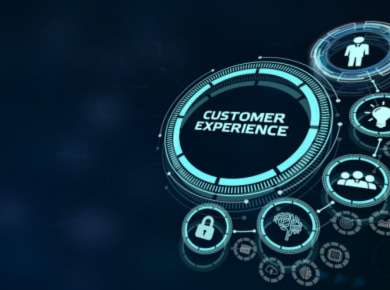Focus the Business Strategy to Unify the Customer Experience
Brands must evolve their approach to address changes to customer behaviours and drive growth, as they bridge their digital and customer experience strategy.

The customer experience and the way brands interact with customers forever changed in 1994. AT&T purchased a small rectangle on HotWired.com, and the digital marketing era was officially off and running. Fast-forward past the introduction of search engines, the rise of social media and the iPhone, and we find ourselves in an era where digital is ubiquitous.
As marketing dollars have aggressively migrated to digital marketing over the last decade, the volume of digital messages consumers is exposed to has skyrocketed. Market leaders understand that canned marketing techniques and generic messaging quickly bore an increasingly savvy consumer.
Creating a consistent customer journey is a critical component of brand strategy.
Companies have been evolving how they connect customers digitally to their brands for years. Whether through email, web, social, mobile and everything in between, brands have been building new experiences for their customers at an ever-increasing pace and scale. They aspire to blur the boundaries between the digital world and physical environments and deliver seamless experiences across multiple touchpoints. Then, a global pandemic forced lockdowns and restricted in-person contact. The digital experience was suddenly the only means of reaching their customer—and it happened, quite literally, overnight.
The global pandemic has clearly changed customer behaviours—perhaps permanently. Brands have quickly evolved their approach to address those changes.
Drive Growth and Bridge the Digital and CX Strategy
Organisations can drive growth as they bridge their digital and CX strategy, but only if they understand and execute on the following:
Agility is the key to success: Reaching customers with personalised content at the right time and in the right context is critical for survival.
Connecting digital and physical experiences: Orchestrating brand experiences across digital and physical experiences fuels customer delight.
Use data to drive decisions: The pandemic highlighted how quickly customer behaviours can change and made clear that brands must use data-driven insights to inform strategic decision-making.
Important Criteria for Evaluating New Tools That Enable a Better Digital Experience
The following criteria is most important for any organisation when evaluating new tools or technologies that enable a better digital experience for their customers:
Ease of use – How many buttons do I have to click to use this thing?
Regardless of the inherent power of a tool, if the workflow is forced and complicated, it is challenging to gain the intended value.
Flexibility – What can it do that I didn’t think of?
A tool with multiple ways to leverage core functionality that can be bent to easily bring value to different use cases, departments or regions will be beneficial in initially unplanned ways.
Integration points – Can I use this thing in conjunction with the other tools you make me use?
Meeting users where they are in their workflow is invaluable in ensuring efficiency.
Breadth of offering – Can this tool also replace this other system I have?
A tool with a forward-thinking roadmap and a comprehensive offering can continue to evolve with your organisation and changing times.
Ability to measure – Can I get metrics that indicate what is happening, and can I prove ROI?
Detailed measurability is table stakes for any digital-oriented tool, although the real key is ensuring that ROI can be identified through evaluating any metrics gathered.
Vendor relationship – Are you going to abandon me after the sale and implementation?
More and more, a close partnership with your vendor of choice is critical. The best partners invest in your success and ensure you are seeing value.
What Types of Metrics Should Organisations Use to Measure Success?
The goal for any metrics evaluation should be attributing action to a measurable outcome that identifies ROI, and that will vary by organisation.
There are tactical, foundational and strategic metrics that are important to any organisation. They serve distinct purposes in both what a key measure is and what that means to the business.
Tactical/Foundational – Within the context of sales enablement, these are the “who,” “what” and some of the “why” metrics—who is using a system, what are they using when they use it and why they are using it in that way.
Knowing these things will help you recognise what content is beneficial and impactful, which will help the content owner team better prioritise what content to create in the future, saving time and effort by not investing in low-value materials.
Strategic – Again, in the context of sales enablement, this is the application of “why” and “how,” mixed with data from other business systems to illuminate the efficacy of strategic initiatives. Does using this tool have a definable impact on our sales, revenue or cost structure, and what is the attributable percentage of that tool’s impact? The metrics to focus on here really depends on what is important to your organisation and how a tool that you are measuring is intended to support those goals.